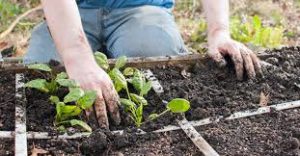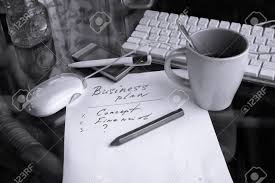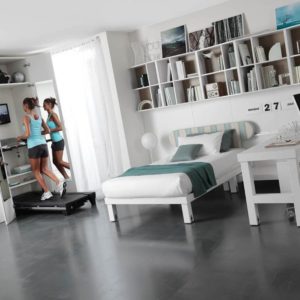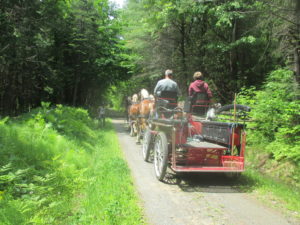Fitting Your Bike
Author: Sierra Klotz, Licensed Physical Therapist & Athletic Trainer
 It’s time to get that bike back on the road again! With all the new rail trails, it has gotten much easier to go biking here in Vermont. Are you ready to go out and enjoy this beautiful weather? These next posts will be dedicated to injury prevention with outdoor sports. A poor fitting bicycle will cause low back, neck and hip pain. It can also create friction in the hips that over time can turn into severe osteoarthritis and may necessitate a hip replacement. One of my favorite sayings is, “An ounce of prevention is worth a pound of cure.” As a Physical Therapist & Athletic Trainer, I specialize in injury prevention for athletes of all ages. To get us started, here are five tips to remember when adjusting and picking out a bicycle to find the perfect fit. These are simple recommendations, but may need to be altered if you already have hip or back pain. If you have pain and feel that you need a more customized fit, we are happy to help you with this during a Physical Therapy session.
It’s time to get that bike back on the road again! With all the new rail trails, it has gotten much easier to go biking here in Vermont. Are you ready to go out and enjoy this beautiful weather? These next posts will be dedicated to injury prevention with outdoor sports. A poor fitting bicycle will cause low back, neck and hip pain. It can also create friction in the hips that over time can turn into severe osteoarthritis and may necessitate a hip replacement. One of my favorite sayings is, “An ounce of prevention is worth a pound of cure.” As a Physical Therapist & Athletic Trainer, I specialize in injury prevention for athletes of all ages. To get us started, here are five tips to remember when adjusting and picking out a bicycle to find the perfect fit. These are simple recommendations, but may need to be altered if you already have hip or back pain. If you have pain and feel that you need a more customized fit, we are happy to help you with this during a Physical Therapy session.
1. Find the Right Seat Height. This is the most important part of fitting your bicycle. Too low of a seat height will cause that degenerative hip osteoarthritis mentioned above because particularly while climbing up hills or going on long rides, there is constant grinding happening inside the hip joint if the seat is positioned too low. Research has also discovered that raising the height of your seat will decrease the compressive loads going through your knee. (M Erikson, “On the Biomechanics of Cycling. https://pubmed.ncbi.nlm.nih.gov/3468609/) This is an excellent article that details how to set your seat height in fairly easy to understand terms:https://www.bicycling.com/repair/a20022803/bike-fit-how-to-set-your-bike-seat-height/. A quick way to find out if your seat is at the right height is to place your bike on a stand or have someone hold your bike still while you sit on the bike seat. When your peddle is at the lowest position, your knee should be between 0-30deg or nearly completely extended. Make sure your knee is not hyperextended. In other words, there should be a slight bend to the knee at this maximal knee extension position.

2. Adjust Your handlebars. Once again, to adjust the handlebars to the best position, it is important to have someone hold the bike or place it on a stand. Now, place both your feet on the pedals and grasp the handlebars. It is most important how your body feels, so if there is strain on your back, shoulders, wrists, or neck, your handlebars will likely need to be adjusted. The handlebars need to be the lowest for mountain biking or sport/performance style bicycling at 5-10cm below the level of the bike seat. For commuting or riding around a city, the handlebars should be nearly level with your seat at 2.5cm above-2.5cm below. For bike touring or longer rides, the handlebars should be just below the seat or 2.5-5cm below the top of the saddle. However, it is very important that while grasping your handlebars in this position, your hips are not flexed to their maximum. Your back should feel comfortable and hips should be at a 100 degree angle or less. If there is back or hip discomfort or excessive hip flexion, raise up your handlebars.
3. Practice Optimal Foot Positioning. While the bike is held stable, place your foot flat on the pedal. The ball of your foot should be just in front of the pedal spindle. This is the part that attaches the pedal to the rest of the bike. The pedal should support the back half of the ball of your foot. Make sure your foot is not too far back on the pedal ie: your toes are not on the pedal. If this occurs, you are more likely to experience achilles pain and injuries. Again, in an ideal pedal position, your toes should be hanging off the front and the pedal should just be underneath the arch and back half of the ball of your foot.
4. Adjust the tilt of the saddle. It is recommended to start at no saddle tilt and based on the shape of the seat/saddle, the nose can be tilted downwards 1-6mm. There should not be any upward tilt to the saddle. This is very important for the comfort of the perineum or pelvic floor. Any upward tilt of the bike seat will increase your likelihood of saddle soreness. It is also important to avoid excessive downward tilt, as this will increase the amount of weight bearing into your arms, which may lead to nerve palsy, shoulder, wrist or elbow pain.
5. Adjust the saddle forward/backward position. This is an important part of the bicycle fit that is often not given enough attention. A bike seat that is too far back will increase the angle of hip flexion needed and place greater loads on the hamstring and gluteal muscles (those muscles behind your thighs). A saddle that is excessively forward will increase the angle of knee flexion needed and place more stress on the quadriceps and hip flexors, (those muscles in the front of your thighs). An ideal forward/backward seat position will balance the amount of work required between your hamstrings, gluteals and quadriceps and share the joint loads evenly between the hip and knee. To find a general ideal forward/backward position, your knee should be directly over your ankle and your hips should be at approximately 100deg of flexion while sitting on the bicycle. This is typically neither all the way forward or backwards, but around halfway in between. If you have very tight muscles, your seat will need to be adjusted based on this and it is recommended that you have a private consultation.
When purchasing a new bicycle, it is also very important that the frame is a good fit for you. The assistant at the bike shop will likely be able to help you with this. However, it is also a good idea to research the bicycle model and make on-line to find what size a person at your height will require. Keep in mind that if your arm span is larger than your height, you will likely need to go one size up. Most bicycle models have a chart of what size is recommended for a person of your specific height. Just as important as investing in a good bicycle model is to invest in finding your perfect bicycle fit.
Sources:
1. BIKE FIT. Physiopedia. https://www.physio-pedia.com/Bike_Fit
2. Wadsworth DJS, Weinrauch P. THE ROLE of a BIKE FIT in CYCLISTS with HIP PAIN. A CLINICAL COMMENTARY. Int J Sports Phys Ther. 2019;14(3):468‐486. doi:10.26603/ijspt20190468













